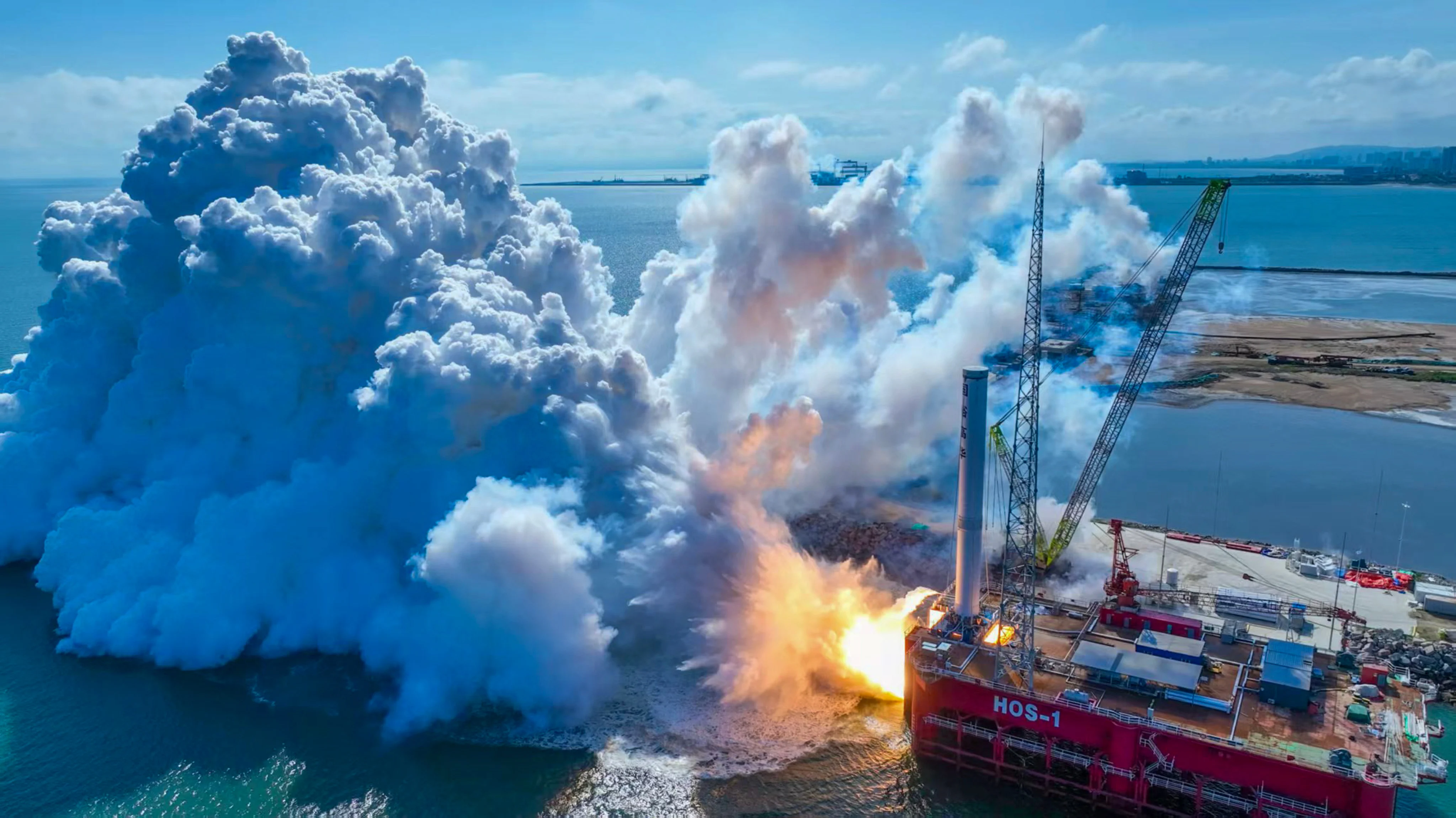By Ling Xin
Copyright scmp

The Chinese reusable rocket race is heating up, with two start-ups and a state-owned developer all aiming for orbital launches by year’s end. If successful, they could help to ease a growing mismatch between China’s limited rocket supply and surging demand.
On Monday, Beijing-based Space Pioneer completed a full-scale test of the first stage of its 72 metre (236 feet) partially reusable Tianlong-3 rocket from an offshore platform in the eastern province of Shandong.
The 35-second burn involved nine Tianhuo-12 engines firing together to produce nearly 1,000 tonnes of thrust in “the most complex and challenging ground trial in rocket development”, according to the company.
Now that Tianlong-3 had passed its “major exam”, it was entering the final sprint towards launch, Space Pioneer said on social media.
“We aim to fly by the end of this year. After that, we plan to quickly move into routine commercial operations, with a target of more than 30 missions annually.”
It was the second such test in recent months by a Chinese private company, following LandSpace’s trial of its Zhuque-3 in June.
Along with the government-backed Long March-12A, Zhuque-3 and Tianlong-3 are contenders to be the next reusable rocket into orbit, a decade after the benchmark set by SpaceX’s Falcon 9.
Tianlong-3, which has been in development since 2022, is designed to carry up to 36 internet satellites at a time – a rate that would support the roll-out of Guowang and Qianfan, China’s low Earth orbit broadband mega constellations.
Rocket shortages are threatening plans to deploy more than 13,000 satellites for each constellation, with neither achieving even 1 per cent of their targets to date.
Tianlong-3 and other commercial vehicles could offer “a low-cost, high-frequency launch solution for China’s satellite internet roll-out”, Space Pioneer said in its social media post.
All three contenders are two-stage, medium-lift rockets with first stages that are designed for reuse up to 10 to 20 times. Tianlong-3 and Zhuque-3 will be able to carry 17 to 18 tonnes to low Earth orbit, approaching Falcon 9’s capacity.
LandSpace CEO Zhang Changwu told Phoenix TV in August that the Zhuque-3 could make its debut launch as early as September, and no later than November. The Long March-12A is targeting the end of 2025 for its first orbital flight, according to an update from the local government where its engine developer is based.
All have faced setbacks on the path to reusability, underscoring the technical challenges of developing next-generation rockets.
Tianlong-3 made headlines last year when it unexpectedly lifted off during a static-fire test and crashed into nearby hills in a fiery explosion. The incident, later attributed to a faulty connection between the first stage and the test platform, destroyed the full-scale vehicle but caused no injuries.
LandSpace experienced a blow in July when its Zhuque-2E rocket failed during its third flight. While the cause was said to be unrelated to Zhuque-3’s crash, the two share a similar second-stage engine design, prompting questions about potential commonalities.
In January, China’s state-owned aerospace contractor conducted a 70km (43.5-mile) vertical take-off and landing test of its Long March-12A. The result was never publicly announced, but Chinese space watchers have speculated that it did not go as planned.
Passionate about science? Dive deeper with the Dark Matters newsletter, a weekly in-depth analysis on China’s rise in science, technology and military that goes beneath the surface. Sign up for free now.



